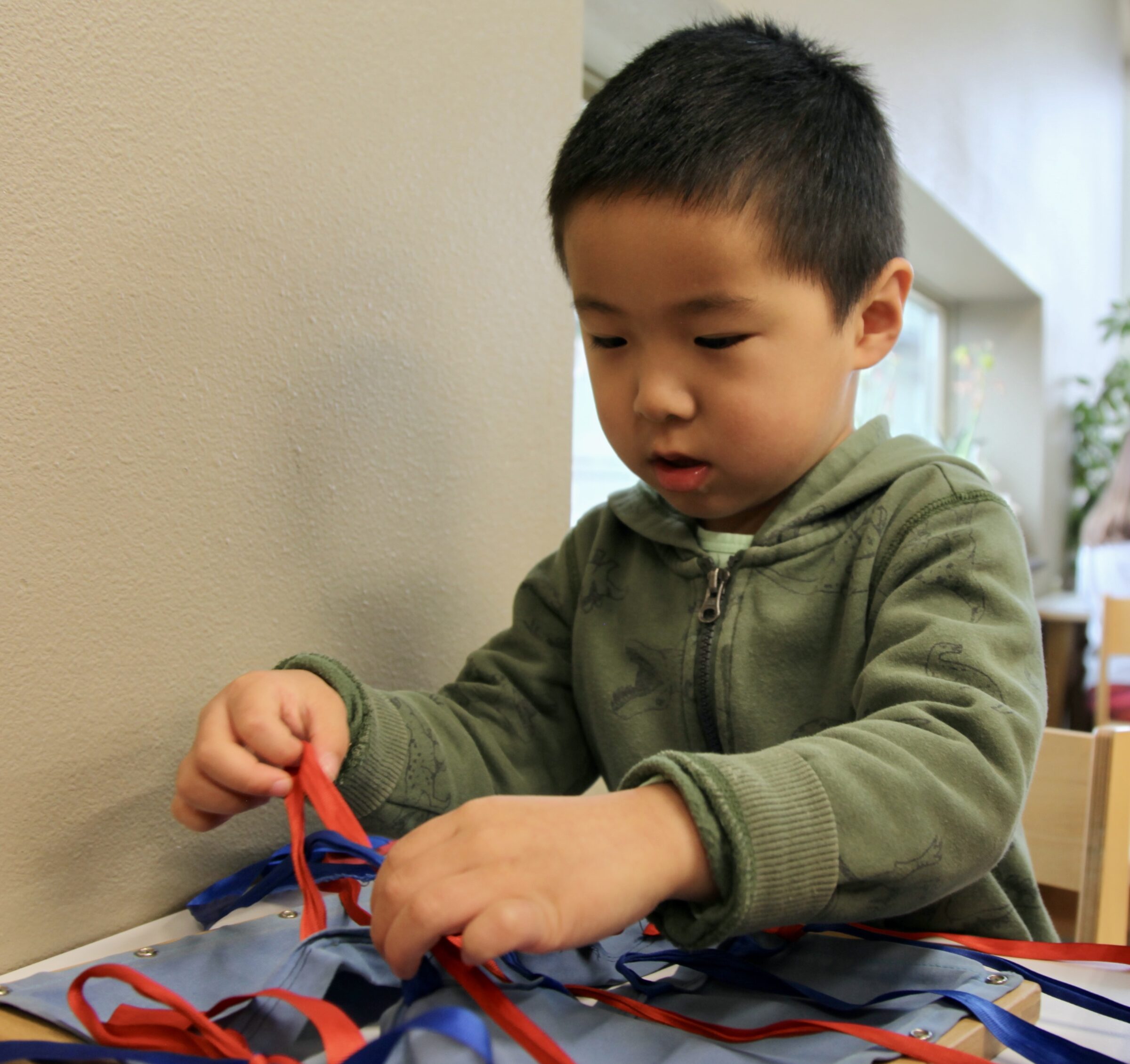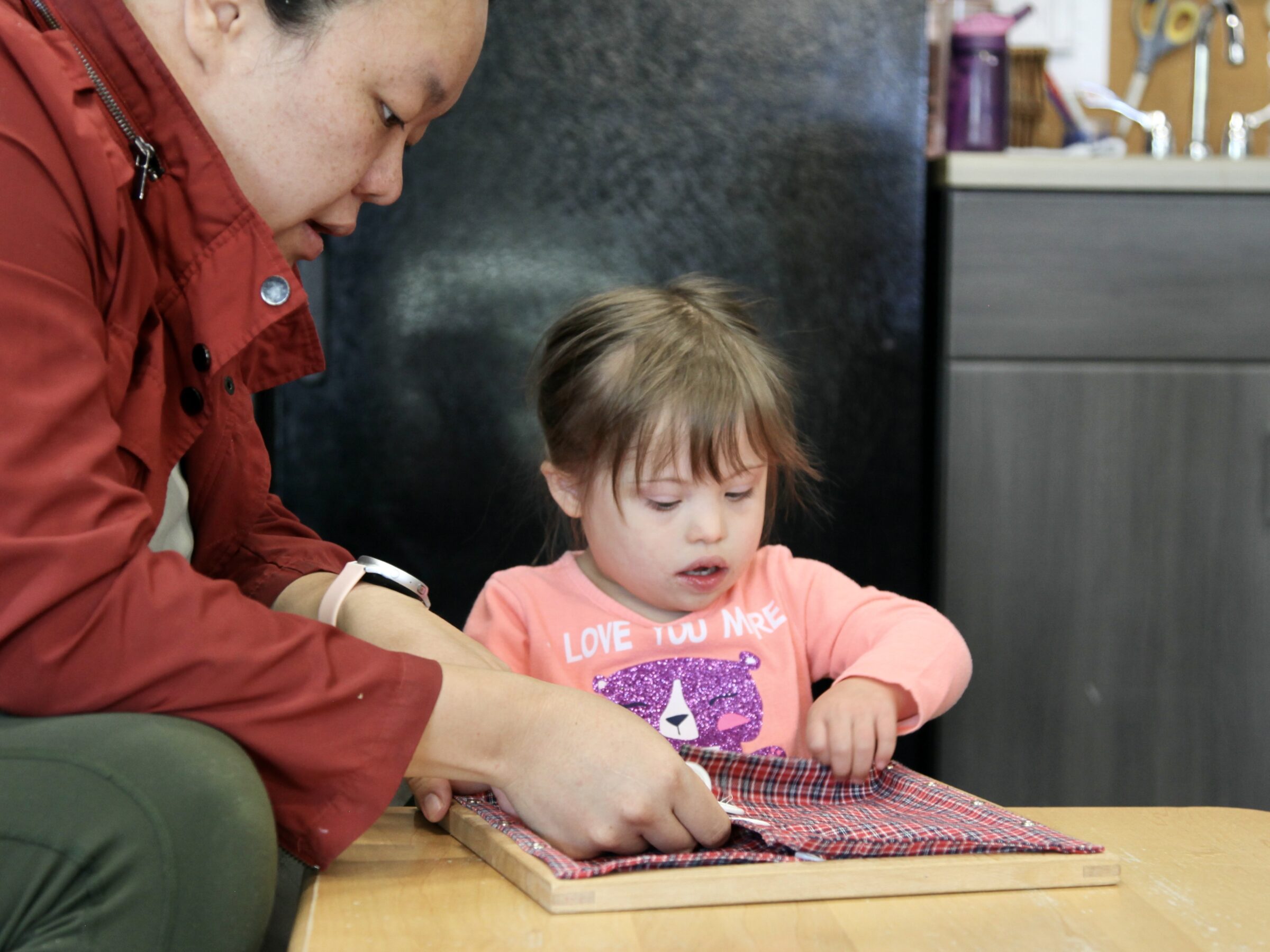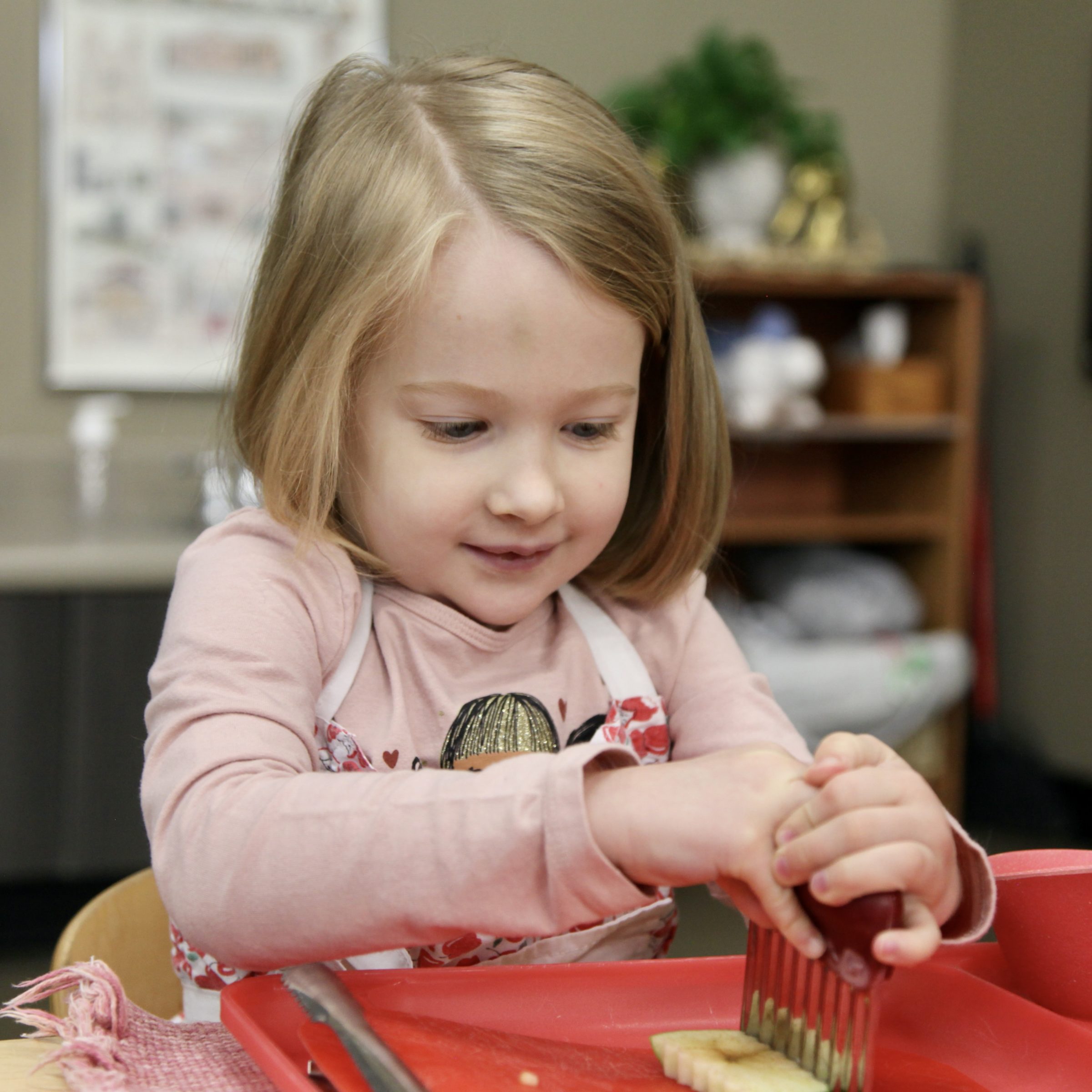Montessori at Home
Thoughts & Reflections

One of the beautiful things about the Montessori paradigm is that it translates so seamlessly, so effortlessly to any situation. The classroom and many of the materials, particularly the Practical Life materials, are adapted to fit the needs, culture, and expectations of the guiding adult and the child or children they are serving.
This makes Montessori ideas, and even materials, particularly suited for incorporation into home life. Please understand, the point of this is not to say your child’s work in the classroom is insufficient, or that there needs to be more work at home. Everything your child does, inside and outside the classroom, is a learning experience for them. These are some ways you can enhance your child’s work in the classroom, encourage their drive for independence, and bring Montessori-inspired activities into your home.
The most basic, and arguably most important, Montessori principle that you can use with your child is reading and talking with your child. Children are learning to be masters of the languages they are exposed to, and fluency in speech improves self-confidence, helps them with communication throughout their life, and paves the way for authorship and other expressions of literacy. Children learn to have conversations through listening to others engage in conversation, and a shared meal is perfect for this. They learn grammar, syntax, colloquialisms, nuance through practicing and playing with language.
Reading aloud to your child models this practice, and reading privately around your child will encourage them to be excited about words. You can have a quiet reading time during the day or week when all members of the family sit down and look at printed material together, though independently. Two year olds can even participate in this by looking at picture books. Though modeling careful handling of paper books and being surrounded by printed material the child can access whenever they like is really preferable, even reading in an electronic format is a fantastic visual for the child to absorb from you, their most favorite hero in the world. If your child believes you like words, and you like reading, they will love literacy, and what greater gift can you give them?
In the same way, you can participate in numeracy with your child. Let them help you count bananas at the grocery store. Pay in cash for small things when your child can help you count out bills and count back change. Cook with your child, and let them measure ingredients. Begin measuring with things where the quantity doesn’t really matter, such as fresh salad ingredients, or where you specifically control the amount you give them to measure, so the process feels fun and relaxing. This is also spontaneous science. Baking is great with children, and pretty simple if you have a scale, so you can say “Keep adding flour until you get to sixteen ounces.” That way, you also don’t have to worry about if it was really two cups, or was it two over-filled cups, or two half-filled cups, or was it three cups? Letting them contribute is huge. Food is a particularly wonderful way to engage in all kinds of conversation with your child. “Let’s see how many colors of apples we can find.” “Do you think this fruit grows on a tree or on a vine?” “Do you think we should have whole cherry tomatoes in the salad, or should we cut them in half?” Be careful to try and not over explain things to your child (such as half), they will certainly tell you if they don’t understand. Much of what we understand from language we gain from contextual clues, and your child is learning to draw these parallels and gain contextual information every time you engage her in conversation.
The tomato scenario was also an example of giving your child choices whenever possible. Be sure that these choices are truly the child’s; whatever they choose should be acceptable. This certainly does not mean only giving them open-ended choices, “Would you like to take a bath?” might be met with “No, thank you!” which puts you in a hard place after generously trying to give your child a choice! “Would you like your bath with or without bubbles?” makes this easier for child and parent — there is no question that the child is going to take a bath, but they do get to choose, get to engage their will in deciding how it’s going to be.
As adults, it is sometimes very difficult to let go and let a child help themselves, especially when the “help” we want to provide is out of love. Yes, we could spread the peanut butter on the toast so much easier, so much quicker, and there would be little to no mess, but the child is so proud of himself when he has contributed to making his own breakfast, when he has taken the blunt butter knife and meticulously smeared the peanut butter over the bread, when he gets to help clean the counter after eating. You are his hero, and he gets to do something you are an expert at, he gets to help you!
This is a great age to give your child chores, or jobs, to do around the house. These can be things like putting books back on the shelf, setting the table, cleaning up after the meal, sweeping, putting toys away, helping with dishes, cleaning up spills, or any one of the items on the list we’ve given you as a handout. Your child is gaining so much through all of these experiences. For example, when you allow your child to set the table, they are participating in one-to-one correspondence, which is the first way the child experiences math. They are learning about causality (if we are having soup, then we need spoons and bowls). They are learning about taking pride in their work and determining preference — should the napkin be folded in a rectangle or in a triangle, or possibly rolled and put into napkin rings? Maybe there could be tea lights on the table? In some cultures, floral arrangements are not uncommon for a dinner table, does he want to prepare something from the garden to make the table more beautiful? Perhaps most importantly, he gets to contribute, he gets to be one of the tribe, he feels no longer the baby.
As much as possible, we would recommend not using plastic, give them breakable objects so they learn natural and logical consequences. Children are naturally more careful with objects that are breakable. Plus, they’re more beautiful! This doesn’t mean giving them heirloom pieces immediately after taking away the sippy cup, but it does mean trusting them with glass, with metal, with wooden objects. They respond differently than plastic when the child engages with them. Obviously, at home, you’re going to have a lot of non-Montessori things that we wouldn’t have in the classroom. This is totally appropriate! We would recommend considering presenting them in a Montessori way, on shelves, spaced out, rotating in and out as interest and space allow, instead of in a box.
Sound Games are one direct connection to the classroom that will help your child’s emerging literacy. We play Sound Games frequently in the classroom to help the child become aware that sounds make up words, which sounds make up specific words, where words begin and end, isolating each individual sound in order. The way we play this in class is typically with a group of children and a selection of pre-named items, such as a tray of small figures that we identify with the group to make sure everyone knows what they are called, our color tablets, or even with the names of the children who are making up the group or the class. This is a great driving game, or doctor’s office game, or game to play with things from your child’s bedroom.
We hope you have enjoyed these few tips on how to implement Montessori at home.
Written by:
Baan Dek



